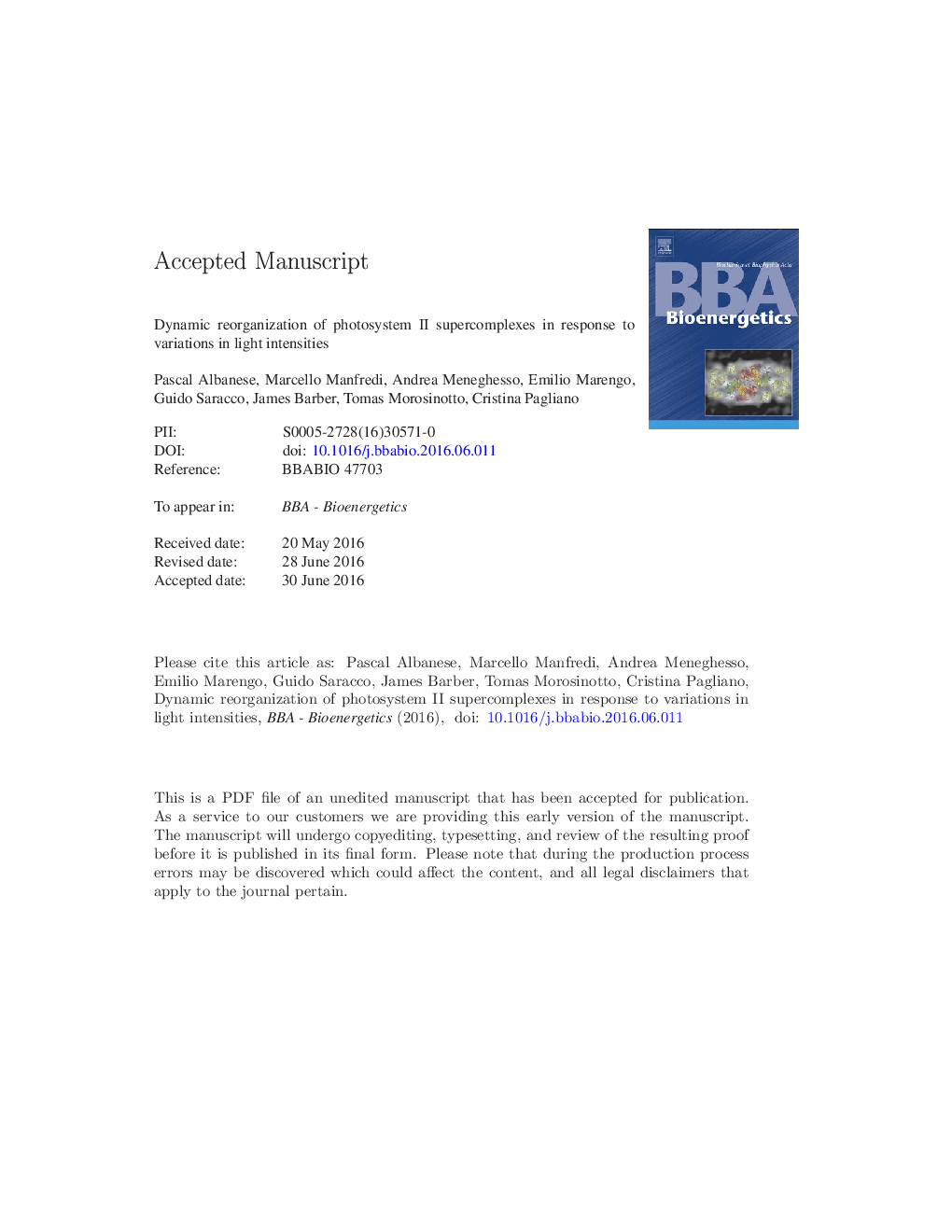| Article ID | Journal | Published Year | Pages | File Type |
|---|---|---|---|---|
| 10795261 | Biochimica et Biophysica Acta (BBA) - Bioenergetics | 2016 | 23 Pages |
Abstract
In this study, we characterized the PSII-LHCII supercomplexes in thylakoid membranes of pea plants in response to long-term acclimation to different light intensities. We provide evidence of a reorganization of the PSII-LHCII supercomplexes showing distinct changes in their antenna moiety. Mass spectrometry analysis revealed a specific reduction of Lhcb3, Lhcb6 and M-LHCII trimers bound to the PSII cores, while the Lhcb4.3 isoform increased in response to high light intensities. The modulation of Lhcb protein content correlates with the reduction of the functional PSII antenna size. These results suggest that the Lhcb3, Lhcb4.3 and Lhcb6 antenna subunits are major players in modulation of the PSII antenna size upon long-term acclimation to increased light levels. PsbS was not detected in the isolated PSII-LHCII supercomplexes at any light condition, despite an increased accumulation in thylakoids of high light acclimated plants, suggesting that PsbS is not a constitutive component of PSII-LHCII supercomplexes.
Related Topics
Life Sciences
Agricultural and Biological Sciences
Plant Science
Authors
Pascal Albanese, Marcello Manfredi, Andrea Meneghesso, Emilio Marengo, Guido Saracco, James Barber, Tomas Morosinotto, Cristina Pagliano,
